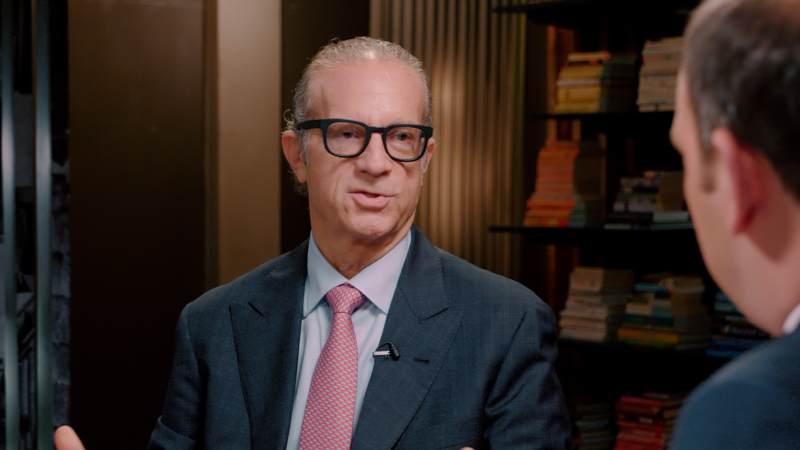They say if you like laws and sausages, you should never watch either one being made.
Banking belongs on that list also, but it seems most people would rather not know.
Economic conditions are poor. We are not in a recovery; we are in a depression. Central Banks don’t understand the problem because central banks are the problem.
“We cannot solve our problems with the same level of thinking that created them” – Albert Einstein.
Despite the Federal Reserve expanding their balance sheet from $800bn to $4.4tn; despite holding interest rates at zero for 8 years; despite all the new ‘jobs’ that have reduced unemployment to 4.4%: the Fed’s measure of inflation is 1.8% and falling, wages are going nowhere, and the Keynesian holy grail of surging ‘aggregate demand’ is as elusive as a glass of lemonade in a Dublin pub.
It seems that no matter what they do, they can’t get companies to pay higher wages, or get people to spend more money. The ‘recovery’ that High Priest Bernanke promised before he took his talents (AKA his address book) to Citadel…has gone bye-byes. And Sister Yellen, alone and forlorn, left holding the can…has run out of places to look.
This is not the way it was supposed to work.
“It is well enough that people of the nation do not understand our banking and monetary system, for if they did, I believe there would be a revolution before morning”– Henry Ford.
The way our banking and monetary affairs are conducted resembles the making of sausages – seeing a sausage being made dulls the appetite, so even people who know, prefer not to dwell on it when they’re eating one. Even so-called ‘experts’ apparently. Here’s Adair Turner, former Chairman of the Financial Services Authority, talking to Martin Wolf over ‘Lunch with the FT’ in June 2016:
“I’d forgotten that banks create credit, money and purchasing power and that they can create too much. But once you return to the fundamentals, you realize that it’s very dangerous to construct a currency union that doesn’t have enough of a political union to make it work” – Adair Turner.
In the mistaken belief that our money and our banking are in some way inevitable, the average person learns to avert their eyes, and after a while, they forget they are eating a sausage. However, our money and our banking are not inevitable; they are merely ubiquitous.
The Federal Reserve (along with the ECB, BOE, BOJ) has spent the past 8 years desperately trying to create inflation. This is because the thing that scares the bejeebers out of them is deflation…
Deflation is the ‘monster’ because in a debt based monetary system (AKA a Ponzi scheme), new debt has to be constantly created to keep asset values expanding. When asset values shrink, the debt acquired to ‘buy’ them doesn’t – revealing what was hidden all along – insolvency – which leads to contagion – which leads to government bailouts – and the process starts all over again. Except that this time the CBs are afraid the monster will be too big to bail out. For once they are right.
This Ponzi scheme was originally designed to serve the interests of two groups of people:
a) Governments – who borrow billions of dollars every month that they cannot acquire through taxation: this is used to bribe ‘special interests’ with government contracts (military, pharmaceutical, oil etc.), and to con the masses with entitlements and benefits (unfunded pensions etc.). A sizeable proportion is used to pay interest on old debt, and an increasing amount is required to fund the ever-growing bureaucracy required to maintain the government itself.
b) Banks – who raise this ‘money’ for governments by selling their debt into the bond markets, making huge profits in a wide variety of ways: some by performing useful functions, and some that can be summarised as ‘front-running’, ‘insider dealing’ and good old-fashioned ‘selling crap to muppets’. Bankers are protected from prosecution because many of their scams are carried out on behalf of governments, and/or contribute to the commercial benefit of government officials; and although politicians tend to be rather dim, they are not so stupid to believe that the bankers would go quietly…
As an aside, the New York mafia have traditionally enjoyed similar privileges, but mainly at the city and state level; though of course the comparison ends when it comes to the printing of money – only the banks are allowed to do that. The government still frowns on money printing when the mafia does it – so they’ve largely given up on counterfeiting, and instead concentrate on things like drugs and prostitution – two activities which politicians and bankers find much easier to overlook, and indeed often partake of.
But I digress…
Here’s what Central Bankers and mainstream economists don’t want you to know:
They don’t know why they have been unable to create inflation. They’ve rehashed spurious explanations like ‘secular stagnation’, and ‘savings glut’ in an attempt to sound like they do…but they don’t.
However, whilst they may not have a clue how the real world works…they do have an uncanny ability to get everything backwards…they are the most ‘arse about face’ group of people imaginable. Well…apart from journalists, but let’s not go there today…
Bernanke, Yellen, Draghi, Carney and Kuroda were convinced Quantitative Easing (QE), Zero Interest Rates Policy (ZIRP) and /or Negative Interest Rates Policy (NIRP) would be inflationary because their theories told them that if you loosen monetary conditions – make credit very cheap – consumers will rush out to borrow and spend; businesses will invest to meet the increase in demand; banks will increase lending…and hey presto unemployment will fall, companies will pay more to attract a shrinking pool of workers, and inflation will rise…the Phillips curve will indicate where the sweet spot is…and everything will be fine. Except that it doesn’t work that way – the real world has very different ideas.
Beyond a certain level of indebtedness, which we reached earlier this decade, the psychology of the markets shifted…not as in ‘gear change’…but as in ‘tectonic plate’. This is how the shift has affected behaviour:
a) Consumers refuse to buy any more crap that they don’t need with money that they don’t have. So they ‘make do’ with what they’ve got. This used to be known as ‘common sense’.
b) Business people – who lose their jobs unless they return earnings to shareholders – realise that an economy where the cost of money is zero is artificial and sick. The last thing they have felt emboldened to do, for years now, is to invest in a glowing future that is nowhere in sight. So instead, they borrow to buy back their own shares, which boosts Earnings Per Share (EPS) and keeps them sitting round the boardroom table…for now anyway.
c) Savers – a selfish bunch of responsible human beings who are thoroughly disapproved of by economists (a selfish bunch of irresponsible human beings who thoroughly approve of themselves)…but as I was saying: savers, rather than thinking ‘what’s the point in saving at these rates, I’ll buy stuff ’…think instead…‘I’d better save even more to make sure I can support myself in retirement’.
d) Banks, who can make billions from front-running the Federal Reserve, who can park their QE back at the Fed for interest, have no imperative to provide loans to the diminishing number of smaller businesses who are still looking to expand.
In short…QE, ZIRP and NIRP have been deflationary, not inflationary…Arse about face.
Firstly let’s debunk the Central Banking claim, via the Bureau of Labour Statistics (BLS) that unemployment is 4.4%. I.E.: that the employment market is ‘tight’:
There are 255 million Americans of working age. Of these, 102 million are not employed. This represents 40% of the working age population, up from 35% at the millennium. Of those, the percentage of unemployed males in the core group of 25 to 54 is at record highs. Meanwhile the percentage of Americans over 55 who are still in work is soaring…again arse about face…
Of the 153 million Americans who are employed, 26 million are in low wage, part time jobs. Of those, 8 million hold multiple jobs. 10 million people classify themselves as ‘self-employed’, which includes a large number who are barely scraping by. A further 21 million people work for the government, jobs that generate no revenue, which are therefore funded by private sector taxes. Jim Quinn of ‘The Burning Platform’ summarises it thus:
“When it is all said and done, there are approximately 94 million full-time workers in private industry paying taxes to support 102 million non-workers and 21 million government workers. In what world does this represent a strong job market?” – Jim Quinn.
So: there are a lot more people available in the labour market than is suggested by the BLS. So then the question is this: Why aren’t businesses hiring them? Why do employment surveys consistently quote employers ticking the box that says ‘hard to find workers’?
Here’s the analysis of Jeffrey Snider from Alhambra Investments:
“Let’s assume the survey results are correct, and that firms are finding it hard to attract candidates. Coming from the other direction, it’s not hard to translate what they are actually saying. In other words, the mainstream always interprets “hard to find workers” as a shortage situation, when that is only one possible interpretation. Since the price of labour over the past decade has barely risen, it isn’t, can’t be, the most likely one.
Instead, there is an unspoken stipulation that is never explicitly stipulated. Businesses are surely finding it difficult to hire good workers at the rate they want to pay today. Obviously, that rate is insufficient so as to clear market demand for supply. Why don’t they pay that market-clearing rate?
Simple. Because unlike how the economy is talked about in the media, the one always derived from the unemployment rate, actual business is sluggish and uncertain at best. There is no rush to find qualified workers, because in reality the economy is tight – not favourably tight as in no slack in the labour market, but more so tight in that there is little margin for addition” – Jeffrey P. Snider.
In summary: the phrase ‘labour shortage’ is yet more blanket macroeconomic garbage from people who have never had a real job let alone run a business that employs people. The reality in the markets is this: executives are reluctant to pay wages at a market-clearing rate. This is the same reluctance that leads them to buy back shares rather than invest in the future, the same reluctance that leads consumers to pull back and savers to double down:
Economic conditions are poor. We are not in a recovery; we are in a depression. Central Banks don’t understand the problem because central banks are the problem.
I have stated my view of the end game on a number of occasions. I can summarise it thus:
Those that live by the sword, die by the sword.
Debt is a claim on the future – on wealth that doesn’t yet exist. When governments mortgage their children’s future to the point where a critical mass and/or a critical group wake up to the fact that it will never be paid back, then the jig is up.
I believe that this awakening will occur in the bond markets. There will be a sovereign debt crisis, which will start in Europe or the emerging markets, and spread across the globe causing major dislocations of capital. I don’t know when this will happen, but personally, I am not waiting until it looks imminent – by then it will be too late to get out of the way.
In the shorter term, I think Ben Hunt of ‘Epsilon Theory’ has a compelling view of how things will pan out:
“As the Fed slowly raises rates, as the barge slowly chugs down the tightening river, it will force companies to play it less safe. It will force companies to take on more risk. It will force companies to invest more in plant and equipment and technology. It will force companies to pay up for the skilled workers they need. You want wage inflation? You want productivity growth? Then raise rates!
My point is a simple one. In exactly the same way that QE was deflationary in practice when it was inflationary in theory, so will the end of QE be inflationary in practice when it is deflationary in theory. That’s the real world impact I’m talking about, the world of wages and output and productivity. You know, the real world that used to be the touchstone of our markets.
My view: as the tide of QE goes out, the tide of inflation comes in. And the more that the QE tide recedes, the more inflation comes in. I know that this sounds like a nutty scenario today, with everyone talking about how inflation is dead and gone, and how the Fed will be “fighting” inflation by raising rates, but I gotta call ‘em like I see ‘em. It’s a scenario that neither central banks nor markets have contemplated in any serious way, but it’s going to be a focus for Epsilon Theory” – Ben Hunt.
I recommend you read the article. In general, his notes and his podcasts are very good – erudite, entertaining and educational. A bit like the FT thinks it is.

With workers pushed to breaking point, is it now time to call time on predatory business models?

Both COVID-19 and the climate crisis are being used as camouflage for central bankers to throw more printed money into a broken system.

With proper access to land denied to the vast majority, is it now time to reclassify trespass as a revolutionary act?